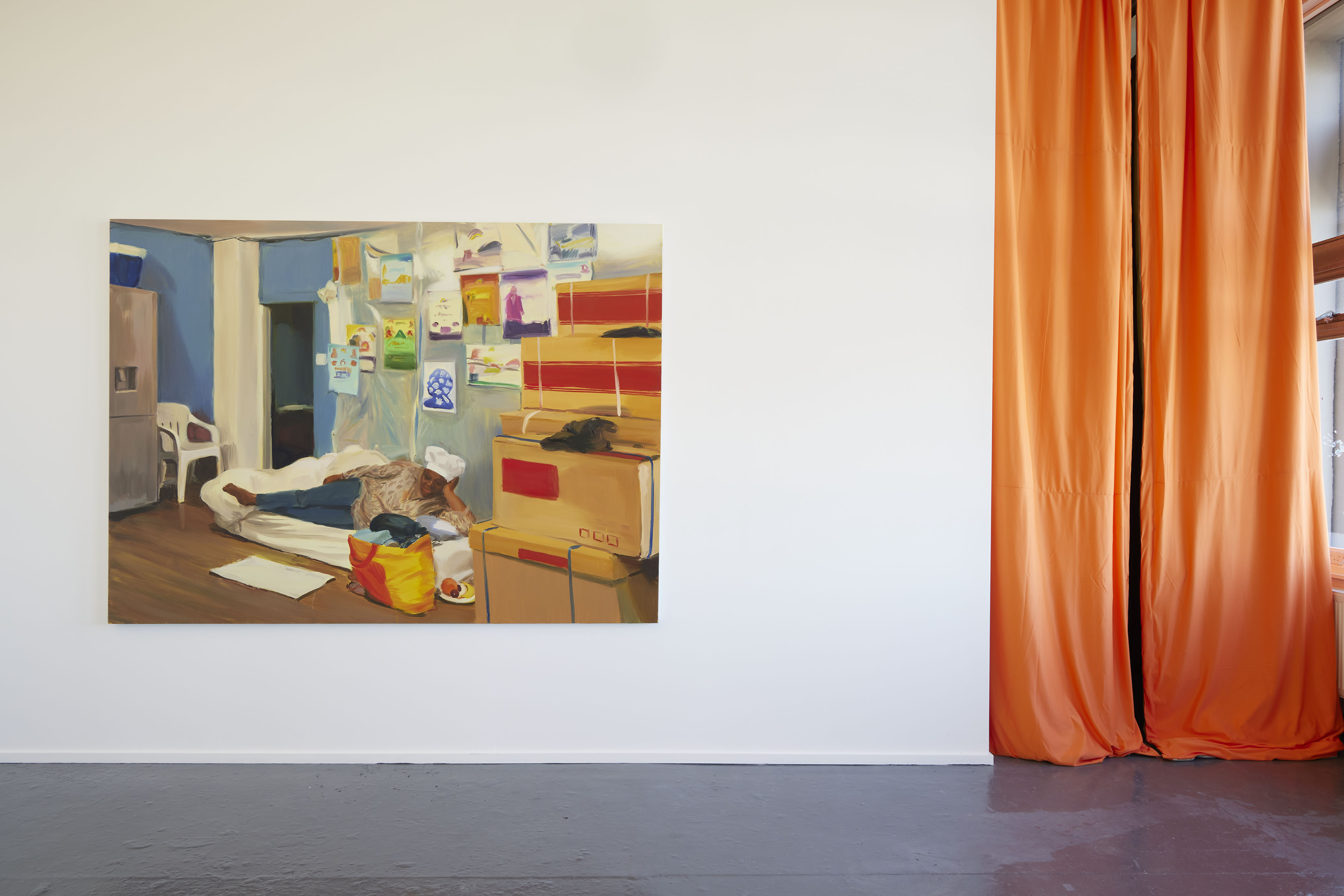


I had never been to Wolverhampton before my visit to the British Art Show 9 (BAS 9). BAS9, proved to be the perfect way to learn more about the city. The British Art Show is held every five years in four different cities in the UK, to “celebrate the vitality of recent art made in Britain”. This year BAS9 started in Aberdeen in the autumn, arrived recently in Wolverhampton and will then travel further to Manchester and Plymouth. It reveals, unveils and presents the works of great artists exploring different themes – healing, care, togetherness, reparative history and future possibilities. Along with these themes are invitations to redefine meanings and experiences of Britishness.
The first work I encounter in the Art Gallery is Helen Cammock’s film and installation Changing Room (2014), which portrays her late father’s experience of racism and alienation growing up in Wolverhampton. It was in this building that the 1979 exhibition Black Art An' Done was held, showcasing the work of five young black artists that wanted their work to be seen. The show also addressed the racial prejudices encountered when growing up as Afro-Caribbean in Wolverhampton. The history of the gallery combined with Cammock’s work stand as a reminder that resistance to a particular system new thing per se, it is just unfamiliar.
The ‘Capsule Collection’ with works belonging to Wolverhampton Art Gallery on the second floor offers a visual opportunity to reflect upon now and then. It highlights that artists don’t need rediscovery or restaging but need to be seen and understood as an imperfect, imbalanced yet continuous whole. For example, Sonya Boyce's Black Female Hairstyles (1995) is made of small-scale collages of different African hairstyles taken from fashion magazines set against bright backgrounds. The work creates an open question about identity, race and gender. Across the other room the paintings of Hurvin Anderson Barbershop from 2017-2020, highlight the role of barbershops in Caribbean communities. A space within a space. In a different room, the sculpture by Sin Wai Kin of a bust with a long wig, Costume for Dreaming (2021) stands as a different iteration of the use and symbolic nature of hair. The sculpture relates to Sin Wai Kin’s film A Dream of Wholeness in Parts, (2021) where drag, music and poetry are queering genres and categories. The wig stands as reminder of our own performances and how we show ourselves to others.
‘What I am trying to understand is how people perform themselves’ explains Simeon Barclay, whose installation Precarious Perched on the Edifice of Ruins (2022-22) transforms a whole room into a dancefloor, with bass beats, flashing neon lights and films flicking rhythmically on screens. A green grid is placed in front of the walls of the museum, partially hiding the traditional landscape paintings from the collection. Offering a filter on what is considered the canon, Barclay shows how the central and the peripheral absorb into each other to co-exist. It’s a moment to reflect upon the art system we operate in. The reproduction of high and low is also captured in the installation of Andy Holden, displaying his late grandmother's collection of porcelain cats, Cat-tharsis (2016/21).
Now that the pandemic, social crisis and changing borders have given us a moment to reflect upon the structures in which we operate, this exhibition seems to ask us where we stand. It seems to emphasise that the answer is in collaboration rather than isolation, community rather than individual. Think, work, dance, read, perform, protest and advocate together. Defend the animal world, take care of each other and our planet, be an ally and help those who need to resist. All these themes are embedded throughout all the works exhibited and resonate in GAIKA’s experimental immersive environment; Grace Ndiritu’s costumes and placards related to a catwalk protest; in Abigail Reynolds offering regular reading hours in a local library; Uriel Orlow’s tea offering; Oscar Murillo’s large stitched black canvases.
The work by Mark Essen with Sahjan Kooner echoes this idea particularly well. It is an ongoing collaboration with local students and artists to create a workshop for making and educational activities, thinking how practical skills can become the starting point of discussions around theory and direct agency within education. The ongoing dialogue that it generates, the self-organisation and stress on collaboration are all elements found in other educational experiments from the British Arts and Crafts Movement to the German Bauhaus and the Indian Shantiniketan, connecting the contemporary discourse to an early twentieth century struggle to live and make together.
BAS9 makes visible the collaboration that is an essential part of its structure. A collaboration between the two curators who did not know each other previously, a negotiation with the city that hosts it and its histories. It stages discussions with the artists that represent a ‘British’ exhibition. Lastly it demands a form of cooperation with its public. When I visited, both venues were very well-attended. They were mostly young people who, unlike me, an Italian based in London, seemed to all be from the city of Wolverhampton. Their British Art Show will be different to mine, attesting to the many and varied entry points that this exhibition offers.
Ilaria Puri Purini
Curator of Programmes
Wolverhampton Art Gallery, Lichfield Street WV1 1DU and Wolverhampton Art School, Wulfruna Street WV1 1LY. Open Monday - Saturday 10:30am - 4:30pm, Sunday 11am - 4pm. Exhibition continues until 10 April 2022. www.britishartshow9.co.uk/